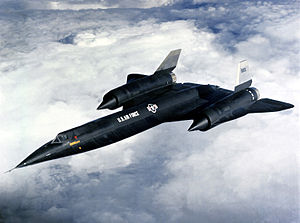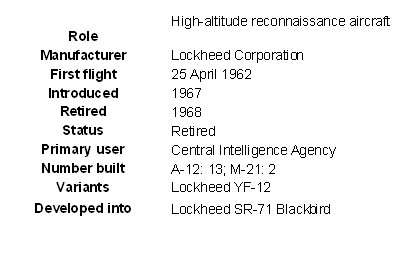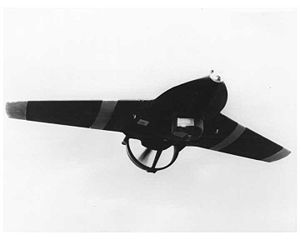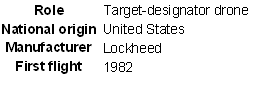Introduction
Lockheed Corporation was until it merged with Martin Marietta one of corporations that supplied the government with fighter jets and technological innovations. Lockheed was instrumental in the advancement of warfare technology especially in aircraft manufacture. The company is credited with the production of Archangel A-12 a craft that formed a foundation for modern day stealth aircrafts. It is also through the development of this aircraft that many technological milestones were reached, an example is the plane could fly at speeds never thought of before. This craft reached speeds no other manned plane has ever to this day. Though the company had over the years been successful it was involved in some unsuccessful programs which to this date remains an embarrassment. An example of this program includes Aquila MQM-105 RPV. Though intended to be a revolution in warfare technology the program was a total disaster and cost the United States government close to one billion dollars (Ben and Leo 1994).


Why did the Archangel A-12 program succeed and the contributions of Lockheed and the Government
The Lockheed A- 12 was an airplane built for the Central Intelligence Agency based on designs of Clarence Johnson. Based on this designs it was produced by Lockheed’s renowned Skunk Work as a reconnaissance aircraft to be used by the CIA. The single seat design was the predecessor to the twin-seat U.S Air Force YF12 interceptor prototype and the most revered SR-71 Blackbird. The A-12 was produced through to 1964 from 1962 and was operational until 1968 from 1963. The final flight of this plane was done in May 1968, and the program and plane retired in the same year on June (Bernard 1988).
Following the failure of Project Rainbow to decrease radar cross section of the U-2, groundwork was started inside Lockheed to develop an aircraft that would overfly the Soviet Union and gather intelligence resource. The designs of these planes were called “Archangel” (Stephen 1986). This was founded after the U-2 program, which at the time was known as “Angel.” As the designs of the plane evolved and configurations variation occurred, Lockheed internal designation referred to these changes as Arch angel-1 to Arch angel-2…. The design’s evolution simply started being referred to as “A-1” “A-2,” etc (David 2007).
The designs had gone up to A-11 stage when a review on the program was done. This arose from competition the program was facing against Kingfish a plane design which was proposed by Convair. Kingfish had the same performance as Archangel; however, Kingfish included features that significantly decreased its radar cross section. The CIA on this point saw the Archangel more favorable over The Kingfish and opted to continue with the A-12 program. In response to this review, Lockheed simply updated the A-11 by addition of two canted fins instead of the previous single right-angled one. They also added a number of regions on the plane that were non-metallic giving birth to A-12 stealth design. The CIA on 26 January 1960 ordered 12 A-12 planes. After the CIA’s selection, further production and designs of the planes was placed under code the name OXCART (David 2008).
Following production and development, the first A-12 was transferred to a test facility located at Groom Lake. This was on 26 April 1962 and Lou Schalk, a test pilot, took the plane on its Shakedown flight. The first A-12 flight was identified as “Article 121” according to the internal documents of the program. The A-12 on its earliest supersonic flight reached speeds of Mach 1.1; this was in 1962 early May. The initial five A-12 produced in 1962 were flown using Pratt & Whitney J75 engines that were capable of producing a thrust of 76 kN. This enabled the planes to obtain speeds close to Mach 2.0. Following the recent developed J58 engines, the planes were fitted with one J58 engine and one J75 engine (Peter 2009). During 1963, the aircrafts were fitted with J58 engines only and this propelled the planes to speeds of Mach 3.2. It was also during this year, 1963, that the program had its first loss. This happened on 24 May when “article 123” crashed near Wendover, piloted by Collins S. Kenneth. In response to the crash, the CIA illustrated the secrecy and importance of the project when they created a cover story of the crash. The CIA claimed the plane was an F-105 and went to great lengths to cover the real crash. A family that was passing, when the crash occurred, and the local law enforcement were intimidated to keep mum about the crash and were paid $25,000 for their silence (Gregory 1992).
Through the entire program a total of 18 planes were produced and of this three were prototypes interceptors built for the Air Force, were A-12, and two were reconnaissance drones carriers. One of the 13 A-12 was the only two-seat and was named “Titanium Goose”. The plane was used primarily as a trainer aircraft and retained the J75 engines throughout its service life. Though the planes were designed to undertake reconnaissance over Soviet and Cuba, they were never used for these roles. During the Vietnam War, the planes were used to search and photograph Surface-to-to air missile sites. The A-12 program was cancelled officially in 1966 December 28 due to budget concerns and coming of the SR-71 plane in March 1968 (Jane’s defence weekly 1986).
The first steps in the phase out of the A-12 came in November 1965. This came when the Bureau of the Budget raised concerns about the cost of the program. Questions were also raised on the number of planes needed for the fleet and if there was need for another CIA unit. BOB (Bureau of the budget) recommended closure of the A-12 program and asked both the Pentagon and CIA to way in other options. This was in 1966 and on the same year though nothing much happened, in June a group was set up to review on ways to cut expenses in the OXCART program. The group noted that both aircrafts would be instrumental in conducting reconnaissance in the near future but would be phased out by drones and satellites in the next decade. On December 12 1966, four senior United States officials met to deliberate on the options. After deliberations, the four concluded there was a need to halt the A-12 program. The program was later continued when it was noticed the SR-71 would still be unfinished at the time of A-12 removal from service. The project now had a new lease of life but this was short lived because President Johnson chose to shut down the program by January 1968 (Jane’s Information Group 1989).
The success of the A-12 can be viewed from two areas: intelligence and aviation. The A-12 program produced what it was mandated to: a plane that was capable of reconnaissance activities, fly at record speeds, at unequaled heights and invulnerable to attacks from enemies. A-12 represented a revolutionary accomplishment in the field of aeronautical engineering. Even after 40 years following its first flight, the A-12 altitude and maximum speed have not been broken or equaled to by any piloted jet aircraft. Most of the aircraft’s designed were used to lay the foundation for stealth research. This included designs for aerodynamics design, life support systems, RCS suppression, and ECMs. Lastly, there was no A-12 or its successor the SR-17 that was shot down while they undertook close to 3600 missions despite the many attempts by enemies (Joseph 1989).
The A-12 as used in intelligence collection is admirable but less striking. This though cannot be attributed to a fault in the design of the aircraft, but on the policy makers in the US who chose not to use it for this purpose. US leaders once thought of using the A-12 to collect intelligence on the People Republic of China but chose to primarily really on satellites. When it was used in intelligence missions, however, its performance was reliable. An example during BLACK SHIELD the aircraft acquired timely and reliable photography of military installations in North Vietnam. As an intelligence collector the aircraft had a close to perfect record. It was a victim of interdepartmental differences and budgetary pressures from lawmakers (Kenneth 1988).
Options that might have improved the outcome of the Aquila program.
The history of the A-12 runs through two major ironies. The first is, it was never used for the primary reason it was made, to overfly the Soviet and gather intelligence. The other irony is, just before the A-12 was declared operational, policy makers decided to replace it with the SR-71. It is an irony that the most advanced plane in history was decommissioned after serving for less a year. This decommissioning was not out of a fault in design but the wrangles and competition between the Air Force and CIA.
When BOB was concerned about the cost of both the A-12 and OXCART programs it recommended A-12 program close down and halting of SR-71 acquisition (Stephen 1988). The predicament of this decision would affect both programs and more so the A-12 program by CIA. OXCART manager summed it all when he said proposal by BOB was going to deny the US government reconnaissance capability that was not led by the military. One option would have been to halt acquisition of SR-71 and place resources on improvement of the A-12. The A-12 should have been fitted with three different cameras for spotting, area search, and mapping. The aircraft should have been fitted with sensors – infrared detectors, ELINT (Devices needed for post-nuclear-strike missions), and side looking radar. Also with the delayed completion of SR-71 and it, poor record of accomplishment the A-12 program should have continued being operational (Nick 1991).
Why did the Aquila MQM-105 RPV program fail and the contributions of Lockheed and the Government


The MQM-105 Aquila also known as eagle or little R was first miniature battlefield drone produced in the US. The drone was produced in 1970s for the army to act as a target finder and designator. The history battlefield drones application actually started in 1973. This is when DARPA commenced a program named PRAIRE, which did tests using a UAV with a TV camera. The UAV was also fitted with a laser target designator. The program, PRAIRE, was able to direct a missile that was guided by lesser to its target which at the time happened to be trucks. DARPA, which lacks a certificate to construct operational schemes, gave the military the notion that proceeded in implementation and progress. Ford Aerospace did the implementation of PRAIRE, but the army placed the ensuing up for bids. Lockheed won the bid as the lowest bidder (Pace 2004).
The MQM-105 Aquila had no tail, was propelled by a 17.9kW 2-piston engine, and carried a FLIR imager in the belly. It also had a TV camera that was stationary, fitted with a line-of-sight stabilization system, and controlled by a gimbaled mirror system. The Aquila was also expected to have a gimbal-fitted Forward Looking Infrared (FLIR) to give it potential of all weather and time operations. The Aquila was designed to be catapulted during launch and fly into a net during recovery. The drone was also fitted with an emergency parachute to be used during recovery. The first flight was demonstrated in 1975, and this led to a complete development contract four years later in 1979. This was later followed by production of a prototype in 1982. This was part TADAR (Target Acquisition Designation and Aerial Reconnaissance) program, which intended to use it with the M712 Copperhead artillery ammunition (Peter 2008)
Lockheed considered international sales for a variant of Aquila known at the time as “Altair.” This venture did not see the light of day and was finally abandoned. Lockheed lacked Ford’s know-how in the field, bringing about setbacks and difficulties in development. The MQM-105 program experienced many problems. This included payload difficulties and vehicle crashes. In spite of this, during operational testing the Aquila demonstrated successfully completion of certain complex tasks. The drone could acquire a target and identify it during various conditions. It could pass control from one ground station to another of the RPV while still in flight, and was fitted with a net retrieval system, which was automatic. Finally, the drone had a tracking and laser-designating system. At the time, production of 376 MQM-105 was expected but the program was cancelled in 1987. The failure of the program was attributed to the ever-changing specification need of the vehicle. This led to the drone never meeting specification leading to its closure with an expenditure of close to one billion dollars (US).
Compare and contrast the two programs
The programs A-12 and Aquila MQM-105 RPV program have the same characteristic as well as differences. The United States security organs commissioned both the programs with the A-12 funded by the CIA and Aquila MQM-105 RPV program funded by the army. Both the programs were headed by Lockheed and during their last days they were halted.
The major contrast between both programs is, though the A-12 program was stopped it cannot be ruled as a failure like the Aquila MQM-105 RPV program. The A-12 program gave a footing to the later development of stealth planes while the Aquila MQM-105 RPV program was a total disaster. While the Aquila MQM-105 RPV program is considered an embarrassment, the A-12 program is revered by most as the revolutionary point of warplanes (Stephen 1988).
References
Ben, R. and Leo, J. (1994) Skunk Works: A Personal Memoir of My years at Lockheed. New York: Little, Brown and Company.
Bernard, B. (1988) Jane’s Weapon Systems 1987-88. Surrey, Jane’s Information Group.
David, R. (2007) Archangel: CIA’s Supersonic A-12 Reconnaissance Aircraft. New York, Government Printing Office.
David, R. (2008) Archangel: CIA’s Supersonic A-12 Reconnaissance. New York, Government Printing Office.
Gregory, W. (1992) The Central Intelligence Agency and Overhead Reconnaissance: The U-2 and OXCART Programs, 1954–1974. Washington, DC: Central Intelligence Agency.
Jane’s defence weekly (1986). Jane’s defence weekly. Surrey, Jane’s Pub. Co.
Jane’s Information Group (1989) Jane’s weapon systems. Surrey, Jane’s Information Group.
Joseph, J. (1989) the art of black magic. AERO, University of Virginia press.
Kenneth, M. (1988) World Unmanned Aircraft. Surrey, Jane’s Information Group.
Nick, C. (1991). Angel, archangel. Pan, Pan.
Pace, S. (2004) Lockheed SR-71 Blackbird. Swindon, Crowood Press.
Peter, W. (2008) Design and Development of the Blackbird: Library of flight American Institute of Aeronautics and Astronautics. Reston, American Institute of Aeronautics and Astronautics.
Peter, W. (2009) Archangel to Senior Crown: Design and Development of the Blackbird (Library of Flight Series). Reston, Virginia, American Institute of Aeronautics and Astronautics.
Stephen, J. (1986). Securing Europe’s future. Hampson, Taylor & Francis.
Stephen, J. (1988) NATO’s conventional defences. Ballinger.